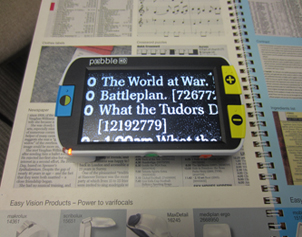So what is low vision? Low vision refers to poor vision that is NOT correctable by glasses, contact lenses, surgery, or medicine. It can affect people of all ages, but is usually associated with older adults. Patients may describe this impairment in the form of missing vision, distorted spots, tunnel vision, or having legal blindness.
The most common causes of low vision include: macular degeneration, diabetic retinopathy, glaucoma, and retinitis pigmentosa. Other frequent causes include: strokes, traumatic brain injury, and albinism. Some ocular diseases that cause low vision may be hereditary, so it is important that family members also have their eyes examined by an eye care provider.
Many people with low vision struggle with performing activities of daily living (ADLs) such as reading, watching TV, cooking, and going on outings. They may struggle with contrast sensitivity, a condition that persist when one does not have enough light or too much light. They have concerns about maintaining a job, depending on family and friends for help, and participating in social or recreational activities. It is important to realize that help is available – there are countless low vision aids and strategies to help those with low vision cope, maximize their remaining vision, and maintain their independence.
Low vision devices are usually optimized for a particular task so unfortunately there is no one specific device that is ideal for a particular eye disease or condition. All patients seen at our office undergo a thorough evaluation then given opportunities to try and train with different devices depending on their individual visual needs and goals. Some people may find they need multiple devices.
For information on some of the low vision tools, please take a look at the sections under our Adult Services.

